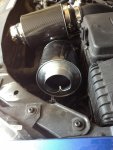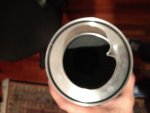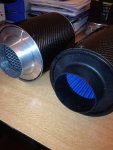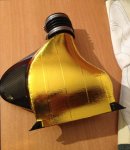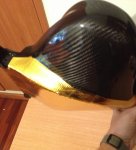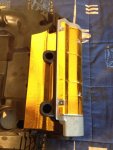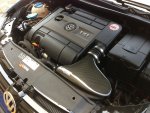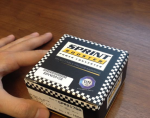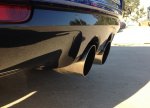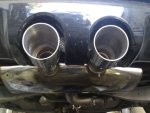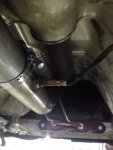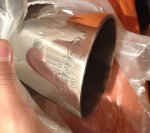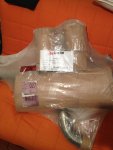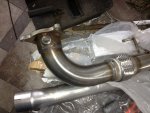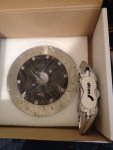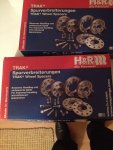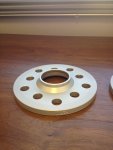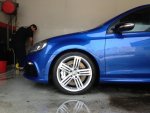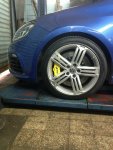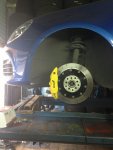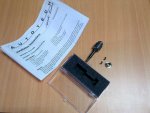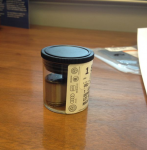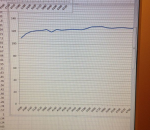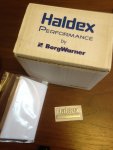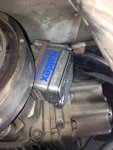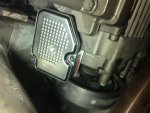42,000Km – HPA Haldex Competition Controller
As most of you know, HPA has developed two performance controllers for the Gen4 Haldex; a standard performance version, with three selectable modes: race, stock, and eco, and a competition version with no selectable modes that comes locked in race. While the competition version is calibrated to offer the same race mode as in the standard performance version, it has the additional feature of retaining rear driveline engagement and increasing clutch torque when braking. By doing so, wheel brake torque is now transferred rearwards through the AWD clutch, offering a far more aggressive deceleration capability. Additionally, according to HPA the Competition controller will support left foot braking without disengaging the 4-motion clutch while out on the track, key advantages for sporty driving.
I have greatly improved drivability and power of my car so far, but understeer remained a major downside, especially with the added muscle. So a month ago, I ordered from CTS Turbo the HPA Haldex Competition Controller here:
http://www.ctsturbo.com/cart/products/Haldex_Gen4_Race_Module-3473-560.html.
I purchased the competition version vs the standard one with selectable modes for three reasons: 1- I have no use for the three modes (stock defeats the purpose of spending shy of $1,000 for this part, and Eco is not really going to do any difference to my fuel consumption with all the power upgrades) 2- the installation of the competition controller is simpler with no wires or selector to drill onto your dashboard, and 3- the rear driveline engagement under braking should prove a substantial advantage for daily driving.
Note: For golf R you need to purchase Haldex controller marked with OBR coupling, (part number 115105 at CTS), TTRS owners will purchase the OBY coupling unit.
Install:
Though it is pretty simple and will take 15 minutes at most, I advise you to do that in a professional shop as some of the Haldex coupling oil will spill in the process. The kit consists of a control unit, a gasket and a valve to be fixed onto the control unit, sorry was too excited to take any pics during install but these are the steps:
1- Raise the car;
2- Clean the area around the OEM Haldex control module;
3- Unplug the two sensor connectors on the back of the OEM control module (this was the tricky part, you’ll need small fingers);
4- Unscrew the two allen bolts which fix the control module to the coupling unit;
5- Remove the OEM unit and have a clean recipient prepped under the OEM controller, cause you will lose a bit of coupling oil while doing so;
6- Install the Upgraded unit, it’s plug and play, and affix the two Allen bolts loosely. Important: do NOT mix the HPA unit with the OEM valve; each unit comes paired with its valve!
7- Plug the two sensors on the back of the HPA unit (you will need to hear an audible click), tighten the Allen bolts and voila

8- I used a syringe with rubber nozzle to “re-inject” the oil spilled in the process.
Outcome:
First of all, if you expect the Competition Controller to turn your car into a Camaro, look elsewhere; the Golf R is still an “AWD Automobile made by ze Germanz”. What the competition controller does on the other hand, is transform the car’s behavior subtly but completely; it’s the same, but so different at the same time. Put simply, and if it makes any sense, the Golf feels more like an AWD BMW rather than an AWD VW

.
The first obvious effect that you will notice is that when you accelerate while turning, the tail kicks out much more easily than before, you can say that there is more power going through the rear wheels; that was of course to be expected, and it works pretty well.
But the constantly present and dominating effect is the much more
neutral balance and feel of the car overall even under normal driving; as you turn you literally feel that the front end and the rear end are symmetrically pivoting around a vertical axle in the middle of the car, and THAT is an amazing improvement and completely cancels understeer! :happyanim::happyanim::happyanim: If anyone tells you that under normal driving the car is the same, that person has no clue whatsoever.
I think this might not be the case though with the standard performance controller as it is likely due to the rear driveline engagement under braking and deceleration (featured only with the competition controller). If so then HPA ought to highlight that characteristic a lot more, cause it will make a substantial difference not only on the track but first and foremost in the way your car always behaves everyday all the time under normal driving.
Under spirited driving, even without sliding, instead of the familiar feeling of being
pulled out of corners you feel you are actually being
pushed from behind, and I am happy to report that understeer is no more. Again, car feels extremely different yet the same.
I have not tracked it yet, but I can tell you that when you push things further the rear will slide more, and much sooner.
The ONLY downside comes from my car actually… as a MY2011 I cannot completely disengage ESP

, same for 2010, and sadly the recoding option using VCDS does not work for all production date cars prior to July 2012!

So whenever I exceed a certain limit with ESP “restricted” it puts me back in check ….
Oh well nothing is perfect I guess, I might go to the point of changing the ESP control module lol….
Bottom line, the HPA competition controller is one of the best upgrades I have done to my car and I highly recommend it, especially if you can deactivate your ESP!:thumbup:

